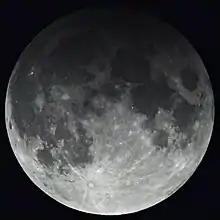
A penumbral lunar eclipse took place on Tuesday, July 17, 1962. This very subtle penumbral eclipse was essentially invisible to the naked eye; though it lasted 2 hours and 48 minutes, just 39% of the Moon's disc was in partial shadow (with no part of it in complete shadow). [1]
Visibility
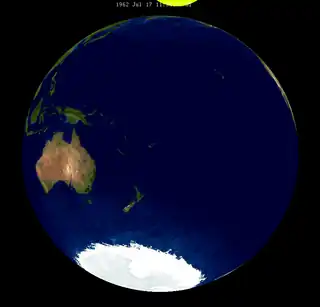
Related lunar eclipses
Lunar year series
| Descending node | Ascending node | |||||
|---|---|---|---|---|---|---|
| Saros | Date Viewing |
Type Chart |
Saros | Date Viewing |
Type Chart | |
| 109 | 1962 Jul 17 |
Penumbral |
114 | 1963 Jan 9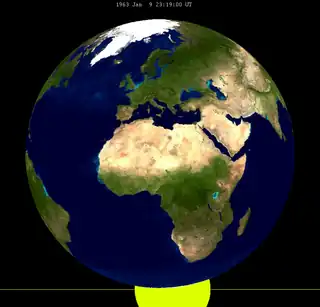 |
Penumbral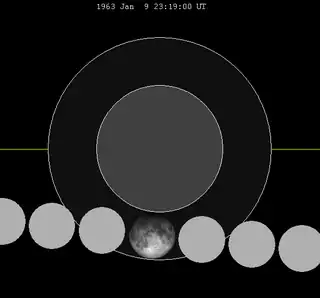 | |
| 119 | 1963 Jul 6 |
Partial |
124 | 1963 Dec 30 |
Total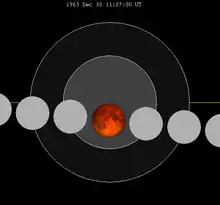 | |
| 129 | 1964 Jun 25 |
Total |
134 | 1964 Dec 19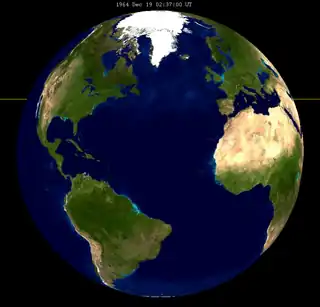 |
Total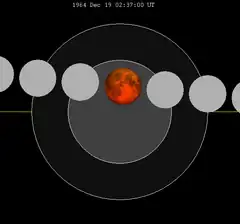 | |
| 139 | 1965 Jun 14 |
Partial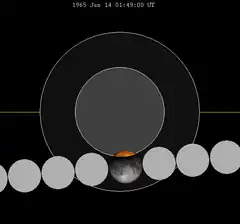 |
144 | 1965 Dec 8 |
Penumbral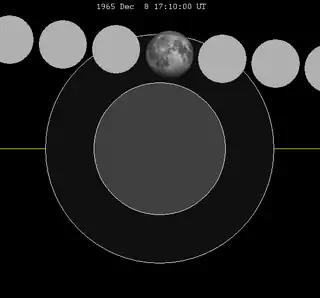 | |
| Last set | 1962 Aug 15 | Last set | 1962 Feb 19 | |||
| Next set | 1966 May 4 | Next set | 1966 Oct 29 | |||
Half-Saros cycle
A lunar eclipse will be preceded and followed by solar eclipses by 9 years and 5.5 days (a half saros).[2] This lunar eclipse is related to two partial solar eclipses of Solar Saros 116.
| July 11, 1953 | July 22, 1971 |
|---|---|
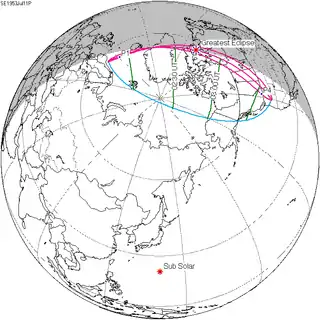 |
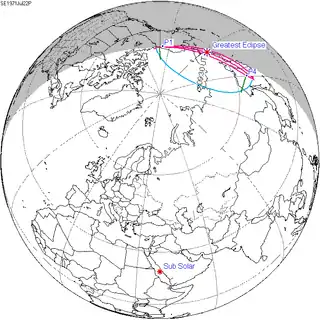 |
See also
Notes
- ↑ Hermit Eclipse: Saros cycle 109
- ↑ Mathematical Astronomy Morsels, Jean Meeus, p.110, Chapter 18, The half-saros
External links
- 1962 Jul 17 chart Eclipse Predictions by Fred Espenak, NASA/GSFC
This article is issued from Wikipedia. The text is licensed under Creative Commons - Attribution - Sharealike. Additional terms may apply for the media files.
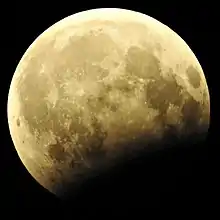
_(cropped).jpg.webp)
